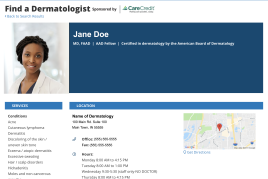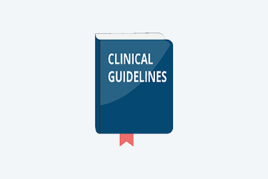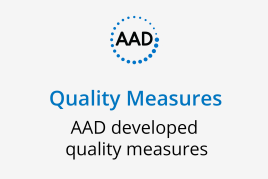Vitamin D
Vitamin D stats and facts
Because ultraviolet rays from the sun and tanning beds can cause skin cancer, the American Academy of Dermatology does not recommend getting vitamin D from sun exposure or indoor tanning.
The U.S. Department of Health and Human Services and the World Health Organization’s International Agency of Research on Cancer panel have declared UV radiation from the sun and artificial sources, such as tanning beds and sun lamps, to be a known carcinogen (cancer-causing substance).1, 2
Unprotected exposure to UV rays from the sun or indoor tanning devices is a known risk factor for the development of skin cancer, including melanoma, the deadliest form of skin cancer.3-8
To protect against UV-induced skin cancer, the Academy recommends a comprehensive sun protection plan that includes seeking shade, wearing protective clothing, and applying a broad-spectrum, water-resistant sunscreen with an SPF of 30 or higher to all skin not covered by clothing.
The AAD recommends getting vitamin D from a healthy diet that includes foods naturally rich in vitamin D, foods and beverages fortified with vitamin D, and/or vitamin D supplements.
While vitamin D is critical for healthy bones, currently there is no conclusive evidence that vitamin D may lower cancer mortality.9-11
While some studies have suggested that vitamin D can reduce cancer incidence, deaths from cancer, and/or improve cancer survival, other studies have not been able to confirm these observations.12-13
The Institute of Medicine (now known as the National Academy of Medicine) concluded that the evidence for associating vitamin D status with health benefits other than bone health was inconsistent, inconclusive as to causality and insufficient to inform nutritional requirement.14-15
Based on currently available scientific evidence that supports a key role of calcium and vitamin D in skeletal health, the NAM’s Recommended Dietary Allowance (RDA)* per day for vitamin D is:
400 International Units (IU) for infants/children 0-1 years
600 IU for children, teenagers and adults 1-70 years
800 IU for adults 71+ years
Vitamin D intake should not exceed 4,000 IUs per day
Because the amount of vitamin D a person receives from the sun is inconsistent and increases the risk of skin cancer, the NAM’s RDA was developed based on a person receiving minimal or no sun exposure.
*The RDA is the intake that covers the needs of 97.5% of the healthy, normal population.
Related AAD resources
1 U.S. Department of Health and Human Services, Public Health Service, National Toxicology Program. Report on carcinogens, 14th ed: Ultraviolet-radiation-related exposures. 2016.
2 ARC Monographs on the Evaluation of Carcinogenic Risks to Humans, No. 100D. IARC Working Group on the Evaluation of Carcinogenic Risks to Humans. Lyon (FR): International Agency for Research on Cancer; 2012.
3 O'Sullivan DE, Brenner DR, Demers PA, et al. Indoor tanning and skin cancer in Canada: A meta-analysis and attributable burden estimation. Cancer Epidemiol. 2019;59:1-7. doi:10.1016/j.canep.2019.01.004
4 Colantonio S, Bracken MB, Beecker J. The association of indoor tanning and melanoma in adults: systematic review and meta-analysis. J Am Acad Dermatol 2014;70:847–57.
5 Boniol M, Autier P, Boyle P, Gandini S. Cutaneous melanoma attributable to sunbed use: systematic review and meta-analysis. BMJ. 2012 Jul 24;345:e4757.
6 Arnold M, Kvaskoff M, Thuret A, Guenel P, Bray F and Soerjomatarm I. Cutaneous melanoma in France in 2015 attributable to solar ultraviolet radiation and the use of sunbeds. J Eur Acad Dermatol Venereol. Published online April 16, 2018. https://doi.org/10.1111/jdv.15022
7 Arnold M et al. Global burden of cutaneous melanoma attributable to ultraviolet radiation in 2012. Int J Cancer. 2018 April. https://doi.org/10.1002/ijc.31527.
8 Parkin DM, Mesher D and Sasieni P. Cancers attributable to solar (ultraviolet) radiation exposure in the UK in 2010. British Journal of Cancer. 2011. 105 (S66–S69). doi: 10.1038/bjc.2011.486.
9 Goulão B, Stewart F, Ford JA, MacLennan G, Avenell A. Cancer and vitamin D supplementation: a systematic review and meta-analysis [published correction appears in Am J Clin Nutr. 2020 Mar 1;111(3):729-730]. Am J Clin Nutr. 2018;107(4):652-663. doi:10.1093/ajcn/nqx047
10 Freedman DM, Looker AC, Abnet CC, Linet MS, Graubard BI. Serum 25-hydroxyvitamin D and cancer mortality in the NHANES III study (1988- 2006). Cancer Res 2010;70(21):8587-97.
11 Pilz S, Kienreich K, Tomaschitz A, Ritz E, Lerchbaum E, Obermayer-Pietsch B, Matzi V, Lindenmann J, Marz W, Gandini S, Dekker JM. Vitamin d and cancer mortality: systematic review of prospective epidemiological studies. Anticancer Agents Med Chem. 2013 Jan 1;13(1):107-17.
12 Bjelakovic G, Gluud LL, Nikolova D, Whitfield K, Krstic G, Wetterslev J, Gluud C. Vitamin D supplementation for prevention of cancer in adults. Cochrane Database Syst Rev. 2014 Jun 23;6:CD007469.
13 Mondul AM, Weinstein SJ, Layne TM , Albanes D. Vitamin D and Cancer Risk and Mortality: State of the Science, Gaps, and Challenges. Epidemiologic reviews 2017:1-21.
14 Ross AC, Manson JE, Abrams SA, Aloia JF, Brannon PM, Clinton SK, et al. The 2011 Report on Dietary Reference Intakes for Calcium and Vitamin D from the Institute of Medicine: What Clinicians Need to Know. J Clin Endocrinol Metab Nov 29 2010 (epub ahead of print)
15 Institute of Medicine. 2011 Dietary Reference Intakes for Calcium and Vitamin D. Washington, DC: The National Academies Press.
 Make it easy for patients to find you.
Make it easy for patients to find you.
 Meet the new AAD
Meet the new AAD
 2022 AAD VMX
2022 AAD VMX
 AAD Learning Center
AAD Learning Center
 Need coding help?
Need coding help?
 Reduce burdens
Reduce burdens
 Clinical guidelines
Clinical guidelines
 Why use AAD measures?
Why use AAD measures?
 Latest news
Latest news
 New insights
New insights
 Combat burnout
Combat burnout
 Joining or selling a practice?
Joining or selling a practice?
 Advocacy priorities
Advocacy priorities
 Promote the specialty
Promote the specialty
